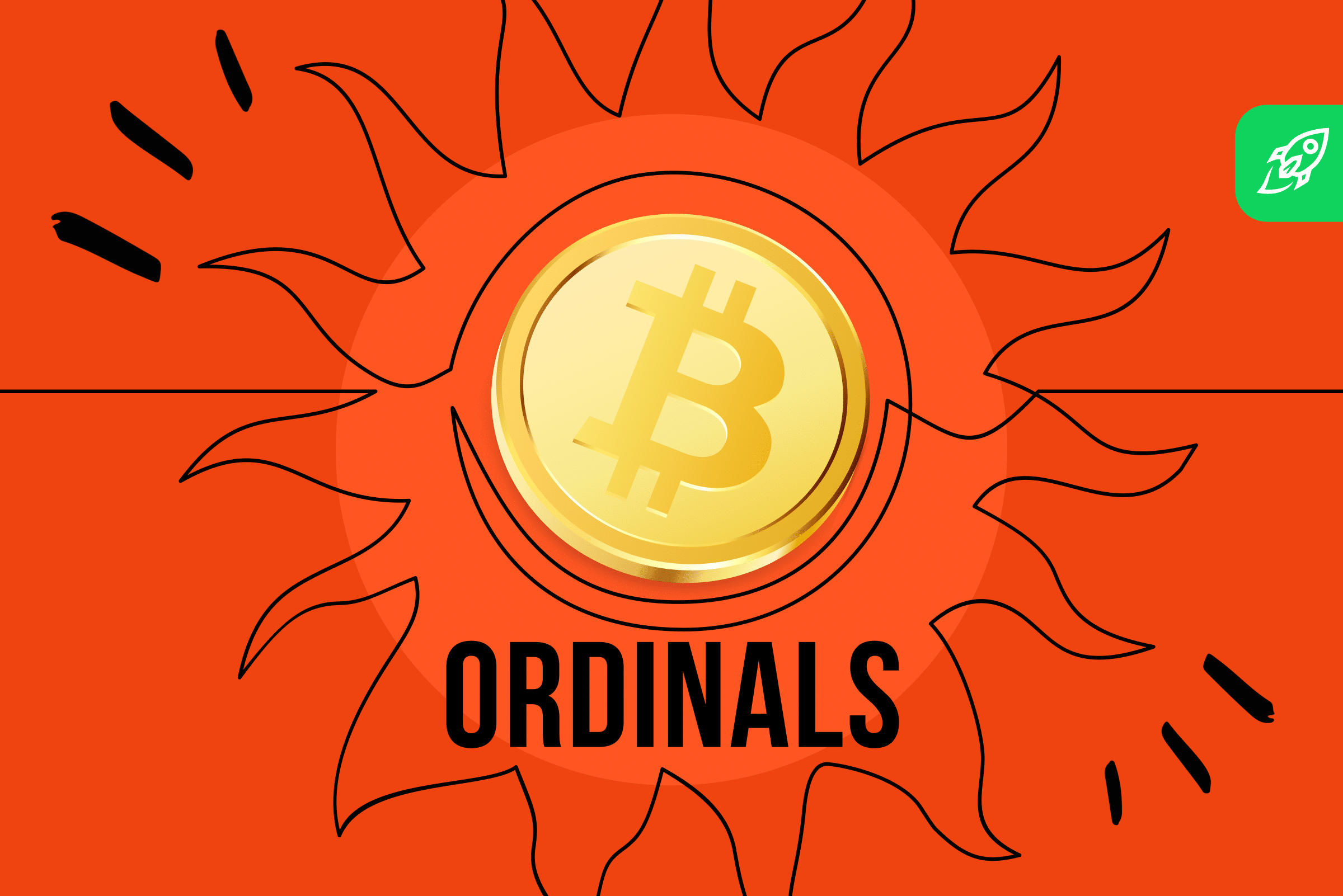Almost everyone is talking about Bitcoin ordinals. Now it is a trend, but it remains to be seen what it is for many. Everything is simple. This guide is dedicated to Bitcoin ordinals and everything related to them.
What Do Bitcoin NFTs Mean?
The historic Bitcoin ordinals protocol was revealed with a ceremony in the lucky month of January 2023. It was led by the wise Casey Rodarmor, who had a clear vision for the future. The underlying system makes it easy to add digital material, such as works of art, to the Bitcoin blockchain, which can’t be changed and has no central authority. In contrast to the usual nonfungible tokens (NFTs) found on Ethereum and other blockchains, Rodarmor wanted to create an unchangeable on-chain representation of a work of art, text, or video material that could not be changed. Rodarmor carefully drew the origin number, a picture of a skull made of pixels, on the lucky date of December 14, 2022.
During the massive growth of the NFT world based on Ethereum’s ERC-721 standard, Rodarmor, an expert in programming and art, saw an opportunity to create a similar but different experience on the Bitcoin blockchain. The person’s creative answer was to use Bitcoin ordinals based on the profound principles of the ordinal theory. These were then put into practice over the year 2022.
The field of ordinal theory looks into the complicated world of satoshis. It gives each satoshi a unique identity, which makes it possible to track them, move them quickly, and give them deep meaning. In February 2023, six weeks after the first ordinal was born, there was a massive rise in interest in the ordinal era.
The number of cryptographic objects grew exponentially, doubling weekly for a certain amount of time. Still, the number’s value could have been much higher if the framework for storing and trading ordinal values had been carefully planned and perfectly implemented.
The rise of Bitcoin ordinals has caused a rapid rise in the Bitcoin network. This has led to increased usage, transaction fees, and storage capacity that has never been seen before, as shown in the picture above. This could be a big step forward for the Bitcoin application layer, marking the beginning of a change from a simple “store of value” to a more helpful structure.
How to Do Bitcoin Ordinals Function?
Ordinals are the basis of Bitcoin ordinals. Ordinals are a profound theory that has given satoshis (sats) life and allowed them to be seen as separate entities in the Bitcoin blockchain. Ordinals, in their most basic form, are a way to use cryptography to list the stars in the sky.
The complicated rules that guide how Bitcoin ordinals work are based on the basic ideas of ordinals theory. The Ordinals theory says that satoshis (sats) should be considered the basic atomic unit in the Bitcoin network and that they should be able to be found and traded on their own. In the world of cryptocurrencies, everyone agrees that a single Bitcoin (BTC) comprises an incredible 100 million sats. Satoshi units, often called “sats,” are carefully given numbers corresponding to the order in which they were mined. These names, which feel exclusive, are written as ordinal numbers that serve as unique markers for each Sat.
As the most basic form of currency, sats can hold the complex digital manifestations that make up the very core of Bitcoin’s ordinal structure. These relics are turned into digital assets that can’t be changed. These are called “immutable digital collectibles,” which can be traded within the Bitcoin network using Bitcoin wallets. In line with the ideas of ordinal theory, ordinal numbers can be used as stable identifiers to link sats to security tokens, accounts, or stablecoins.
Rodarmor doesn’t like it when people mix Bitcoin ordinals and nonfungible tokens (NFTs). This is because ordinals can be used for a wide range of purposes. On the Bitcoin blockchain, a nonfungible token (NFT) is a token that can only be used by one person. This is done using ordinal numbers to identify a satellite attached to or printed with a JPEG picture. Ordinals are mainly used for nonfungible tokens (NFTs) on the Bitcoin blockchain, their most popular use. However, it is essential to remember that ordinals can be used for more than just NFTs.
Comparing Ordinals and Traditional NFTs
From a technical design point of view, it is essential to realize that ordinals are very different from traditional nonfungible tokens (NFTs). Ordinals have unique features that set them apart from other digital assets when it comes to price.
Bitcoin ordinals serve as unique identifiers for sats, making it easy to find and letting people store valuable material or works of art on the blockchain. The Ethereum ERC-721 standard, well-known for making it possible to make nonfungible tokens (NFTs), usually includes storing information or a reference to the artwork, which generally lives off-chain. Some Ethereum nonfungible tokens (NFTs) are currently experimenting with on-chain storage, which is rare in the ecosystem as a whole.
One thing that makes Bitcoin ordinals unique is how their scarcity is determined and how complicated the rules are for how the prices of nonfungible tokens (NFTs) change. In the world of Ethereum-based nonfungible tickets (NFTs), the unique qualities of the artwork are the main factor determining how rare and how much these digital assets are worth. In the world of nonfungible tokens (NFTs), like the Ethereum Name Service (ENS), it’s essential to realize that scarcity is a big part of what gives them their actual value.
In the world of Bitcoin, the value of digital goods would be closely tied to the key points that make up the structure of Bitcoin blocks. The first 1,000 or 10,000 ordinal numbers that are etched could have a lot of value for crypto collectors. People shouldn’t be surprised if the first Bitcoin is sold for a large amount of money, like a few million dollars, in a few years. On the other hand, some satoshis may be worth more than others.
The creators of Bitcoin ordinals suggest a simple system in which the shortage of a Sat and the ordinal that goes with it are based on important events in the world of cryptography. The first Sat of each new block is rarer than the other Sats in the same league. Even more rare would be the first time a recalibration step happened, which happens about every two weeks. With the next halving happening in 2024, it’s essential to know that the first satoshi of every halving period will give us an extra layer of shortage.
At last, the first set of the adjustment era, which happens once every six halvings or once every 24 years, will bring us a new level of shortage. According to the people who came up with this revolutionary idea, it has the potential to set Bitcoin ordinals apart from NFTs, giving their scarcity a random element that isn’t affected by the starting teams of nonfungible token collections or the artists themselves.
This study explains why there was a temporary peak in the interest in Bitcoin ordinals shortly.


